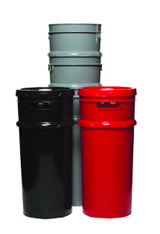
On April 24th, twenty-six-year-old Ben Harris was pressurizing a keg as part of a cleaning process when it exploded. Harris, who worked at Redhook Brewery’s Portsmouth Brewery location, died shortly thereafter at nearby Portsmouth Regional Hospital.
The federal Occupational Safety and Health Administration (OSHA) is currently investigating the incident. Investigations can take up to 180 days.
The reaction from brewers has been more immediate, however.
“When I received the news in an email, I sent it out right away to our maintenance and safety team,” said Mike Utz, a plant engineer for Boulevard Brewing. “I told them we needed to check out every piece of our keg cleaning line.”

Andy Troccoli, the Occupational Safety and Health Consultant for New Belgium Brewing, said that most breweries are “reasonably safe” but added that the industry’s rapid growth is a concern.
“We are a bunch of growing companies and it is tough to keep up with growth the way you want to,” he said. “There can sometimes be a lapse.”
That is why anyone who begins working at New Belgium will go through months of rigorous safety training before operating any equipment on their own, he added.
“There is an extensive training period,” Troccoli said. “You have to demonstrate that you know what you are doing to people who have already been doing it for many years.”
Like New Belgium, the Harpoon Brewery requires all new employees to complete safety training before they are allowed on the brewery floor. Al Marzi, the head brewer and safety officer said the company takes safety seriously.
“Safety isn’t something you just check off on a box and say, ‘okay we are done,’” Marzi said. “We have a safety program, a safety officer and a committee that meets once a month. We also have a yearly audit by our insurance company, to get another set of eyes to walk through the whole process.”
Both Marzi and Troccoli said that Redhook likely had similar safety standards and described the Harris incident as a “freak accident.”

Everyone we questioned said they would store the keg until it was returned to the proper owner, but definitely would not pressurize or begin cleaning the keg.
“It’s not uncommon to receive other breweries’ kegs,” Utz said. “We would never clean somebody else’s keg and there is zero chance it would get cleaned if it were plastic.”
As of press time, Redhook could not confirm if Harris was in the process of cleaning the keg, but initial reports by the Portsmouth Press Herald indicated that he was pressurizing the keg as part of a cleaning process when it exploded.
And as the industry continues its torrid growth, and more entrepeneurs continue entering the space, the question is will these new players be capable of managing the safety concerns of an industrial business?
Marzi expressed some concern.
“When you have one or two tanks, you don’t pay attention to safety as much,” he said. “It would serve anybody that is getting into the industry well to ensure that they are safe.”
Troccoli said he didn’t feel that brewing was any more dangerous than the next industry, but did say that more education would be beneficial.
“It would be interesting, as an industry, if we could do more on safety,” he said. “There is no set of standards from the Brewers Association and as a safety guy I think it is always great when organizations have standards. I think there is room for improvement.”